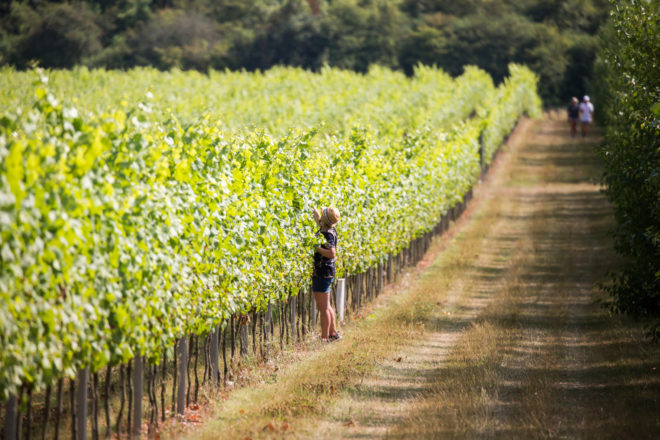New guidance for winemakers in South Downs National Park
August 2, 2021

The Authority has produced new planning guidance for current and potential winemakers – recognising that any increase in vineyards must protect and enhance the treasured landscape of the South Downs and help biodiversity.
This is supported by a new report which looks at the growth in wine production witnessed in the National Park in recent years and looks at its potential for the future.
The study has shown that the potential for more viticulture may be significant, bringing hundreds of new jobs and millions of pounds-worth of investment to local rural economies in the National Park.
There has been a 90 per cent increase in vineyard coverage in the South Downs National Park since 2016, with around five new vineyards planted every year.
Currently around 0.4 per cent of farmland is used for viticulture – but 34 per cent could be suitable for vineyards.
The study identifies 39,700 hectares of land in the South Downs National as being suitable for viticulture. If just one-tenth of this land (3,970 ha) were to be converted for growing grapes, this would represent an area larger than the current UK viticulture sector (3,500 ha in 2019) and more than 22 million bottles of wine could be produced annually. (2.5m are currently produced annually)
If vineyard area and wine production in the National Park doubles, to almost 1,000 ha, the study estimates 800 people (full-time equivalent jobs) could be employed, an annual contribution to the wider economy of £127 million could be provided, and 75,000 tourists could visit each year.
Read the summary of the study here.
The Viticulture Technical Advice Note can be read here.
 Lucy Howard, Planning Policy Manager, said: “This useful guidance forms a framework for how viticulture could expand in the National Park over the coming years, while also delivering benefits for landscape and biodiversity.
Lucy Howard, Planning Policy Manager, said: “This useful guidance forms a framework for how viticulture could expand in the National Park over the coming years, while also delivering benefits for landscape and biodiversity.
“The Authority is also in the process of developing an environmental best practice guide which we hope will be ready for release later this year.
“This will provide advice to vineyard owners and managers on ways to enhance biodiversity on a vineyard.”
